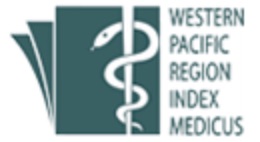Comparing Two Views Of Video Demonstration For Access Cavity Preparation: A QuasiRandomized Controlled Trial
DOI:
https://doi.org/10.31436/imjm.v16i2.1063Abstract
Introduction: Demonstration of the access cavity preparation procedures to dental students is challenging due to the limited operating field and detailed nature of the procedures. It is especially difficult to visualize how instruments are functioning inside the pulp space. The aim of this study was to develop and compare two different views of video demonstration in teaching access cavity preparation. Materials and Methods: Two videos of access cavity preparation were filmed, showing occlusal view of a whole tooth (WT) and sagittal view of a sectioned tooth (ST). Using quasirandomization, third year dental students (n=57) were divided into two groups to watch either one of the videos. The perception and performance of both groups were compared using Mann-Whitney U test and Fisher exact test. Results: At baseline, group WT (n=29) and group ST (n=28) were not significantly different in terms of operative scores (p=0.330). After watching the videos, the basic understanding of the theories were similar between both groups. However, ST responded more positively towards the helpfulness of the video in visualizing the inner anatomy of the tooth and in implementing the procedures (p<0.05). ST also completed the exercise within a shorter time (p<0.001). Nevertheless, the quality of the prepared access cavities was not significantly different between groups. Conclusion(s): Using sagittal view of sectioned tooth in video demonstration of access cavity preparation can improve students learning and performance speed. We highly recommend showing the sagittal view of sectioned tooth in video demonstration of access cavity preparation.
Downloads
Downloads
Published
How to Cite
Issue
Section
License
All material submitted for publication is assumed to be submitted exclusively to the IIUM Medical Journal Malaysia (IMJM) unless the contrary is stated. Manuscript decisions are based on a double-blinded peer review process. The Editor retains the right to determine the style and if necessary, edit and shorten any material accepted for publication.
IMJM retain copyright to all the articles published in the journal. All final ‘proof’ submissions must be accompanied by a completed Copyright Assignment Form, duly signed by all authors. The author(s) or copyright owner(s) irrevocably grant(s) to any third party, in advance and in perpetuity, the right to use, reproduce or disseminate the research article in its entirety or in part, in any format or medium, provided that no substantive errors are introduced in the process, proper attribution of authorship and correct citation details are given, and that the bibliographic details are not changed. If the article is reproduced or disseminated in part, this must be clearly and unequivocally indicated.










